As electric vehicles continue to gain traction in the automotive market, two contenders are emerging in the SUV segment: the Audi Q4 e-tron and the Ford Explorer EV. Both manufacturers are making strides in technology and sustainability, but how do these electric SUVs stack up against each other? This article dives into the technical specifications and innovations offered by these models to help consumers make an informed choice.
Audi Q4 e-tron vs Ford Explorer EV – Differences & prices compared
Both models have their strengths – but which one suits you more?
Compare performance, efficiency, price and space directly: Audi Q4 e-tron or Ford Explorer EV?
Design and Dimensions
The Audi Q4 e-tron boasts a sleek and modern design, with dimensions measuring 4588 mm in length, 1865 mm in width, and 1632 mm in height. It offers a spacious trunk capacity ranging from 520 to 535 liters, perfect for families or weekend adventurers. In contrast, the Ford Explorer EV, slightly smaller, measures 4468 mm in length and 1871 mm in width, with a height of 1630 mm. The trunk capacity is somewhat less generous, ranging from 445 to 450 liters.
Powertrain and Performance
Both SUVs feature electric powertrains, enhancing performance while minimizing environmental impact. The Q4 e-tron offers a range of power options from 170 HP to 340 HP, with torque figures peaking at 679 Nm. With an impressive acceleration time as low as 5.4 seconds from 0-100 km/h, it delivers a robust driving experience. The Ford Explorer EV, on the other hand, provides power outputs also reaching up to 340 HP but with a slightly lower torque of 679 Nm. Acceleration times for the Explorer are competitive, clocking in at 5.3 seconds.
Electric Range and Efficiency
Efficiency is crucial in the electric vehicle market, and both SUVs deliver commendable figures. The Audi Q4 e-tron has an electric range that can reach up to 554 km, while the Ford Explorer EV leads with an impressive maximum range of 602 km. In terms of energy consumption, the Q4 e-tron averages between 15.9 to 17.4 kWh/100 km, whereas the Explorer EV outshines it with consumption levels between 13.9 to 16.6 kWh/100 km. This highlights the Explorer’s edge in energy efficiency.
Battery Capacity and Charging
Battery technology plays a significant role in electric vehicle performance. The Q4 e-tron is available with two battery capacities—52 kWh and 77 kWh—while the Explorer EV comes equipped with a slightly larger 79 kWh battery. Both vehicles support fast charging capabilities, allowing for quick top-ups during long journeys, but specific charging times and performance can vary based on the respective battery technology used.
Interior and Comfort
Interior quality and comfort are paramount in the luxury SUV market. The Audi Q4 e-tron showcases a refined interior with high-quality materials and advanced technology, including a sophisticated infotainment system. Seating five comfortably, it prioritizes passenger comfort and space. The Ford Explorer EV also seats five and includes a modern infotainment interface, but the overall luxury feel may not quite match that of the Audi. However, the Explorer’s cabin design is practical and spacious, appealing to a slightly different market segment focused on utility.
Conclusion
Both the Audi Q4 e-tron and Ford Explorer EV represent compelling options in the emerging electric SUV market. The Q4 e-tron excels in luxury and performance, making it a great choice for those prioritizing style and refinement. Meanwhile, the Explorer EV impresses with its extended electric range and efficiency, making it a practical option for families and everyday drivers. Ultimately, the choice depends on an individual's preference for luxury versus practicality, but both vehicles stand at the forefront of automotive innovation.
Here’s where it gets real: The technical differences in detail
Costs and Efficiency:
Price and efficiency are key factors when choosing a car – and this is often where the real differences emerge.
Ford Explorer EV has a slightly advantage in terms of price – it starts at 34200 £, while the Audi Q4 e-tron costs 39600 £. That’s a price difference of around 5357 £.
In terms of energy consumption, the advantage goes to the Ford Explorer EV: with 14.50 kWh per 100 km, it’s hardly perceptible more efficient than the Audi Q4 e-tron with 15.90 kWh. That’s a difference of about 1.40 kWh.
As for range, the Ford Explorer EV performs slight better – achieving up to 602 km, about 48 km more than the Audi Q4 e-tron.
Engine and Performance:
Under the bonnet, it becomes clear which model is tuned for sportiness and which one takes the lead when you hit the accelerator.
Both models deliver identical power – 340 HP each.
In acceleration from 0 to 100 km/h, the Ford Explorer EV is barely noticeable quicker – completing the sprint in 5.30 s, while the Audi Q4 e-tron takes 5.40 s. That’s about 0.10 s faster.
There’s no difference in top speed – both reach 180 km/h.
Both models offer the same torque – 679 Nm.
Space and Everyday Use:
Beyond pure performance, interior space and usability matter most in daily life. This is where you see which car is more practical and versatile.
Both vehicles offer seating for 5 people.
In curb weight, Ford Explorer EV is minimal lighter – 1908 kg compared to 2035 kg. The difference is around 127 kg.
In terms of boot space, the Audi Q4 e-tron offers a bit more room – 535 L compared to 450 L. That’s a difference of about 85 L.
In maximum load capacity, the Audi Q4 e-tron performs barely noticeable better – up to 1490 L, which is about 68 L more than the Ford Explorer EV.
When it comes to payload, Ford Explorer EV to a small extent takes the win – 585 kg compared to 515 kg. That’s a difference of about 70 kg.
Who wins the race?
The Ford Explorer EV proves to be shows small but notable strengths and therefore becomes our DriveDuel Champion!
Ford Explorer EV is the better all-rounder in this comparison.
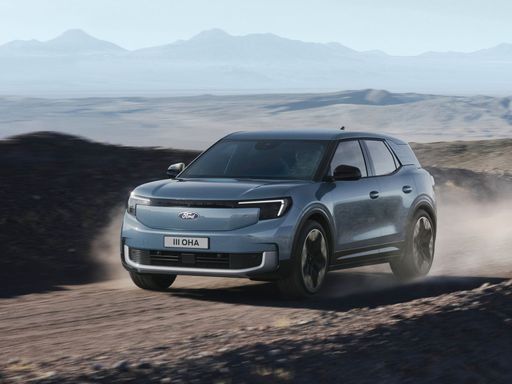 @ Ford Motor Company / Ford Media Center
@ Ford Motor Company / Ford Media Center
Ford Explorer EV
Audi Q4 e-tron
The Audi Q4 e-tron brings Audi polish into the electric crossover scene, pairing a sleek exterior with a refined, airy interior that makes everyday driving feel distinctly premium. It’s an easy-to-live-with EV that balances comfort and real-world usability with intuitive tech, making it a smart choice for buyers who want electric mobility without giving up Audi character — and yes, it still looks good in the driveway.
details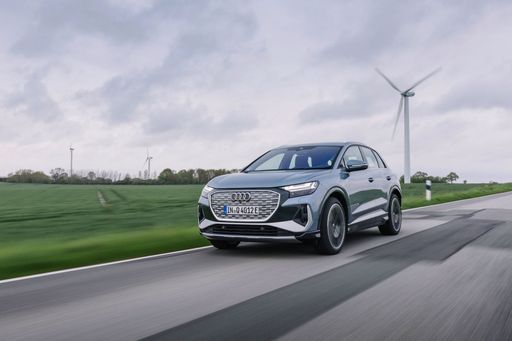 @ Audi AG
@ Audi AG
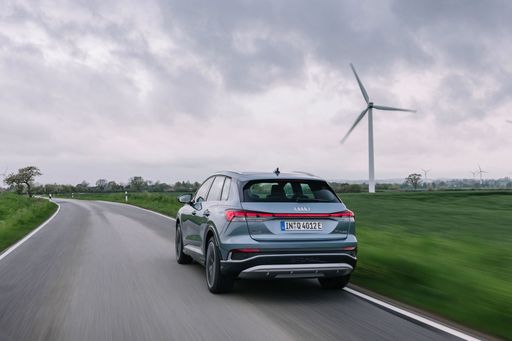 @ Audi AG
@ Audi AG
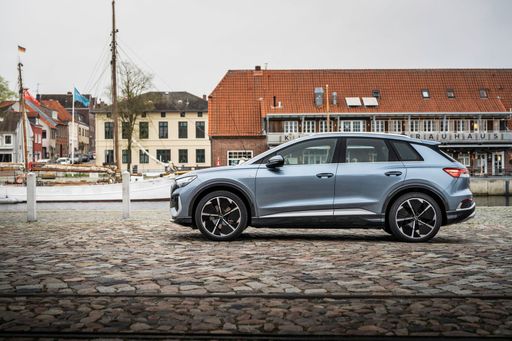 @ Audi AG
@ Audi AG
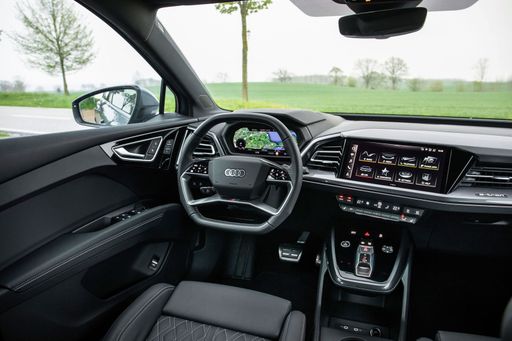 @ Audi AG
@ Audi AG
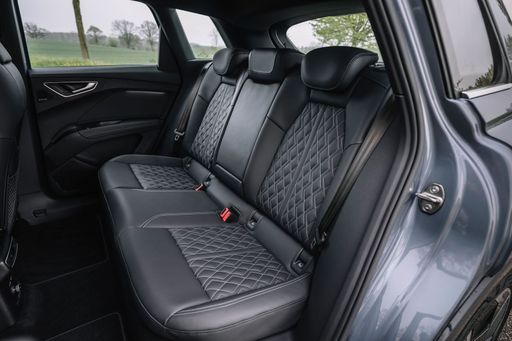 @ Audi AG
@ Audi AG
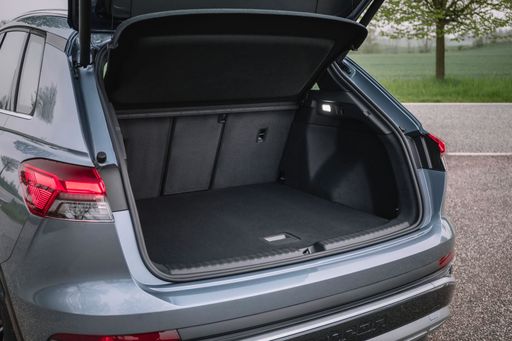 @ Audi AG
@ Audi AG
Ford Explorer EV
The Ford Explorer EV translates the familiar big‑American SUV presence into whisper‑quiet electric motoring, offering roomy seating and a tech‑forward cabin that will please families and road‑trippers alike. It drives with more composure than its boxy looks suggest, blending a comfortable ride and eager acceleration while undercutting the guilt of gas stops — a practical, modern alternative for buyers who want Explorer space with electric charm.
details @ Ford Motor Company / Ford Media Center
@ Ford Motor Company / Ford Media Center
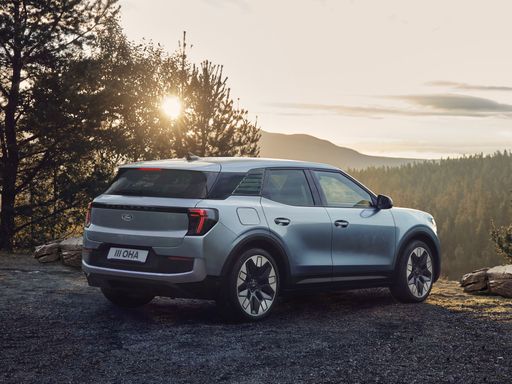 @ Ford Motor Company / Ford Media Center
@ Ford Motor Company / Ford Media Center
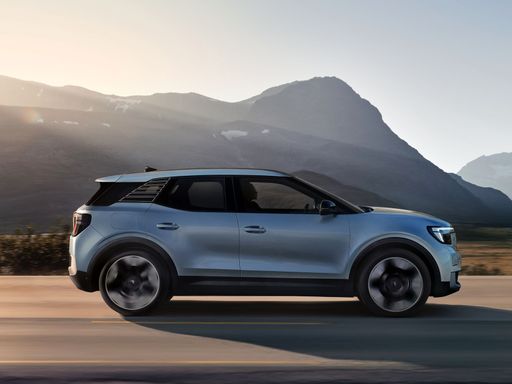 @ Ford Motor Company / Ford Media Center
@ Ford Motor Company / Ford Media Center
 @ Audi AG
@ Audi AG
|
 @ Ford Motor Company / Ford Media Center
@ Ford Motor Company / Ford Media Center
|
|
|
|
Costs and Consumption |
|
|---|---|
|
Price
39600 - 58800 £
|
Price
34200 - 48800 £
|
|
Consumption L/100km
-
|
Consumption L/100km
-
|
|
Consumption kWh/100km
15.9 - 17.4 kWh
|
Consumption kWh/100km
14.5 - 17.2 kWh
|
|
Electric Range
406 - 554 km
|
Electric Range
360 - 602 km
|
|
Battery Capacity
59 - 77 kWh
|
Battery Capacity
52 - 79 kWh
|
|
co2
0 g/km
|
co2
0 g/km
|
|
Fuel tank capacity
-
|
Fuel tank capacity
-
|
Dimensions and Body |
|
|---|---|
|
Body Type
SUV
|
Body Type
SUV
|
|
Seats
5
|
Seats
5
|
|
Doors
5
|
Doors
5
|
|
Curb weight
2035 - 2235 kg
|
Curb weight
1908 - 2179 kg
|
|
Trunk capacity
520 - 535 L
|
Trunk capacity
445 - 450 L
|
|
Length
4588 mm
|
Length
4468 mm
|
|
Width
1865 mm
|
Width
1871 mm
|
|
Height
1614 - 1632 mm
|
Height
1630 - 1639 mm
|
|
Max trunk capacity
1460 - 1490 L
|
Max trunk capacity
1417 - 1422 L
|
|
Payload
505 - 515 kg
|
Payload
561 - 585 kg
|
Engine and Performance |
|
|---|---|
|
Engine Type
Electric
|
Engine Type
Electric
|
|
Transmission
Automatic
|
Transmission
Automatic
|
|
Transmission Detail
Reduction Gearbox
|
Transmission Detail
Reduction Gearbox
|
|
Drive Type
Rear-Wheel Drive, All-Wheel Drive
|
Drive Type
Rear-Wheel Drive, All-Wheel Drive
|
|
Power HP
204 - 340 HP
|
Power HP
170 - 340 HP
|
|
Acceleration 0-100km/h
5.4 - 8.1 s
|
Acceleration 0-100km/h
5.3 - 8.7 s
|
|
Max Speed
160 - 180 km/h
|
Max Speed
160 - 180 km/h
|
|
Torque
310 - 679 Nm
|
Torque
310 - 679 Nm
|
|
Number of Cylinders
-
|
Number of Cylinders
-
|
|
Power kW
150 - 250 kW
|
Power kW
125 - 250 kW
|
|
Engine capacity
-
|
Engine capacity
-
|
General |
|
|---|---|
|
Model Year
2023 - 2025
|
Model Year
2024 - 2025
|
|
CO2 Efficiency Class
A
|
CO2 Efficiency Class
A
|
|
Brand
Audi
|
Brand
Ford
|
What drive types are available for the Audi Q4 e-tron?
The Audi Q4 e-tron is offered with Rear-Wheel Drive or All-Wheel Drive.
The prices and data displayed are estimates based on German list prices and may vary by country. This information is not legally binding.
